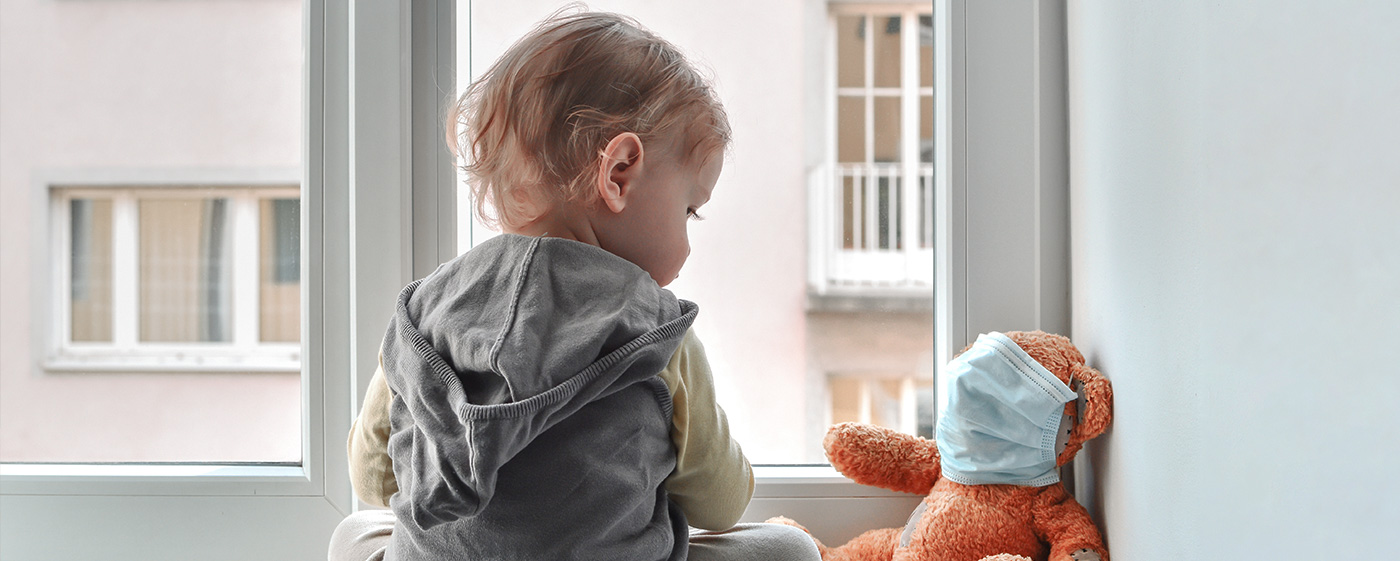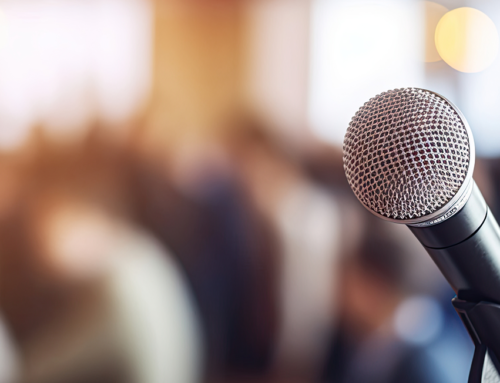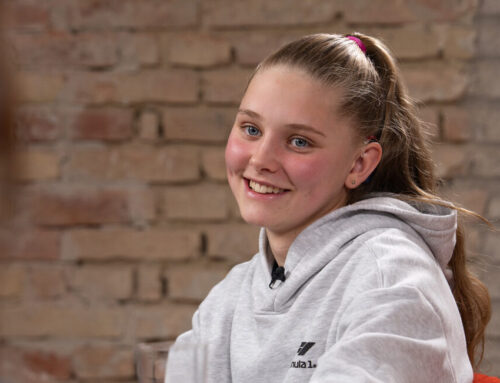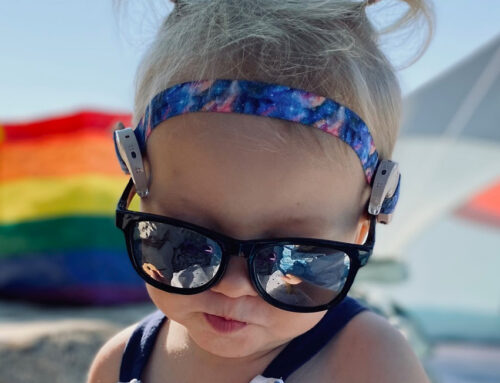Communication barriers in times of COVID-19
Many people with hearing impairment use lip reading for communication. The obligatory mouth and nose masks are a barrier; exemptions, masks with clear windows or visors can help, as well as well-adapted hearing systems are helpful.

“Sorry, what difference does that make? I can’t hear you with a mask over your mouth!“[1],[2] The sight of the mouth is used, sometimes unconsciously, in communication with hearing persons not just by older people, whose hearing gradually deteriorates, but also many users of hearing aids or implants and profoundly deaf people.
“Deaf people are now really stuck”, explains Detlef Klussmann from the Düsseldorf Disability Council, himself a CI-user. “Many deaf people read their conversation partner’s lips. Because of the obligation to wear a mask, lip reading is no longer possible”. “We recognise that the health of everybody is the priority. But despite that, the broader public needs to be aware that many hearing-impaired people […] are hugely restricted in their ability to communicate because of the mandatory masks. That cannot continue in the long term”, says Michael Schwaninger, President of the Hessen-Rhine-Main Cochlear Implant Association, on the association web site. In Austria, this affects an estimated 1.7 million people.[3]
Even communication by sign-language is affected by mouth and nose masks because lip-cues are also a component of the individual signs. “Sign language is not the answer either, as we and our community generally communicate audibly”, adds Schwaninger, who is also on the board of the Deutsche Cochlea Implantat Gesellschaft DCIG [German Cochlear Implant Society]. “Another aspect which has hardly been considered yet is the social distancing rule. The further away you are from someone, the more quietly the listener hears what is said.”
25 Per Cent Understand Significantly Worse
In Italy, the corona pandemic led to people falling ill earlier than here in Austria. There, too, the association of the hearing impaired drew attention to the fact that patients with hearing difficulties suffer greater communication problems due to the masks. That was particularly noticeable in the area of emergency admissions. This was ascribed both to the filter effect of the protective masks and sight of the lips being obscured by the mask.
Scientists in the University Clinic of Foggia, in southern Italy, investigated this problem scientifically.[4] To do this, 59 hearing impaired patients with an average age of 60 and with different complaints were asked after their treatment about how they had perceived communication during their emergency admission. More than 85% of those asked complained of problems in understanding, of whom a quarter said these difficulties had been significant. Sound damping through the masks due to the mouth masks has been a problem for 44 per cent, and nearly 56 per cent of those asked missed a view of the lips.

There are no limits to creativity when it comes to mask production – but it’s still usually a barrier for people with hearing problems. ©Adobe Stock
Masks with windows!
Austrian media[5] reported on the American Ashley Lawrence, a student of Inclusive Pedagogy at Eastern Kentucky University in Richmond in the state of Kentucky, who is making mouth and nose masks with a sight window together with her mother. “I saw on Facebook that people have been making masks for other people so that not everybody is using disposable masks. And I thought, “what about the deaf and hard of hearing people?”, she says in an interview with the news platform Lex 18[6]. “We are trying out different models for people with hearing aids because they can’t stretch the rubber bands of the masks around their ears.”
There are lots of reports on the internet and in the media about these mostly private initiatives, which distribute home-made mouth and nose masks with windows free or at least very cheaply. Specialist businesses have also responded to the demand: for example, there is a health-care products supplier in Vienna which also supplies material masks made of cotton with a clear plastic window online. They cost almost the same as FFP2 masks that also protect the wearers themselves – a good thirty percent above the price of conventional mouth and nose masks.
Masks with windows could also be useful in communication with small children or those with learning difficulties, explains special-needs teacher Jojo Giese from Mannheim, Germany, to the magazine Regenbogen. They are helpful to anyone who is afraid of concealed faces or to whom facial expression and lip cues are important. “If the view of the mouth is obscured as well, a whole lot of information, context and small details that are necessary to properly understand the person you are talking to are also lost.” Together with Bärbel Steegmüller, she has developed two versions of such masks. The only materials they use are a piece of cloth, a plastic tablecloth and ribbons. The pair have made video sewing instructions available online[7].
Clear Barriers to the Virus
To spare their employees a working day with mouth and nose masks, some shops are using plexiglass screens to shield customers and employees at the checkout from each other. However, transparent face visors also constitute a barrier to droplet infection. They should cover the face from forehead to chin inclusive and also offer sideways protection. Some dentists have been using this kind of visor.
There is still discussion in some quarters as to whether face screens actually fully replace the function of a mouth and nose mask. A press release from the Work and Social Ministry attests in any case that a visor “sits more stably and does not allow moisture through”. Face visors for this purpose can be purchased commercially from around 15 Euro but can also cost many times that depending on the design. A simple home-made face visor can be made, for example, from the clear plastic cover of a folder or a binder.
“I don’t see what you’re saying!”
Mouth and nose masks with a window or a transparent face visor: if affected persons themselves use them, that will not help much. People with hearing impairments will only be helped in their communication if the people they are talking to use the transparent virus protection.
That is why the Linz self-help association Von Ohr zu Ohr [From Ear to Ear] is recommending clients who have a hearing impairment to always carry a card or a note indicating the circumstance “I have a hearing impairment and need to see your mouth to understand you”. The Junge Selbsthilfe Deaf-Ohr-Alive Rhein-Main [Young Self-help Deaf-Ear-Alive Rhine Main] wants to put this information with catchy wording on their own mouth and nose masks.[8] It might be „Can’t see – can’t understand”, “I don’t see what you’re saying” or “you can understand me, but what about me?”
People talking to hearing-impaired people could remove the mask for the duration of a short interaction. At least in the German state of Hessen, an instruction has been given to the enforcement officers responsible for adherence to the mask rule since 30th April that temporary removal of the mouth protection for better communication with hearing impaired persons should not be punished if the minimum 1.5m social distance rule is maintained.
Mandatory Masks
Affected persons in Austria share experiences on Facebook: “I was in the post office and couldn’t understand the clerk. He didn’t take the mask off!” “When I ask people to take them so I can understand better, people just lower the mask to their nose”, another affected person complains that the lips remain covered. A third answers: “I have just been stopped by the police. I asked them to take the mask off so that I could understand: Wasn’t a problem.” “I did that too when I didn’t wear an hearing aid”, says a CI-user, happy that that is no longer necessary with the implant system.
If neither mouth and nose masks with a window nor face visors are available, there is still pen and paper, or of course, well-adjusted hearing provision on both sides, which makes audio-verbal communication sufficiently possible. That is how it is for Gabriele Woditschka, bilateral cochlear implant user. “If lots of people now have to use face masks in the corona crisis, I can understand with the CIs even without lip reading. That wouldn’t have been possible with hearing aids.”
[1] Wienerisch: „Entschuldigung, was macht das aus? Ich höre mit dem Mundschutz so schlecht!!“
[2] https://www.wieneralltagspoeten.at/poeten
[3] Vom Hören und Sagen – Grundlageninformation über das Hören http://www.publichealth.at/100und1/wp-content/uploads/2019/03/08_Grundlageninformationen-%E2%94%9C%E2%95%9Dber-das-H%E2%94%9C%C3%82ren.pdf
[4] Eleonora M.C. Trecca, Matteo Gelardi; Michele Cassano COVID-19 and hearing difficulties, American Journal of Otolaryngology, 2020, https://doi.org/10.1016/j.amjoto.2020.102496
[5] https://kurier.at/freizeit/leben-liebe-sex/mit-sichtfenster-studentin-naeht-mundschutzmasken-fuer-gehoerlose/400805501
[6] https://www.lex18.com/news/coronavirus/college-student-makes-masks-for-the-deaf-hard-of-hearing
[7] https://www.youtube.com/watch?v=-gvvfPX1iKk&feature=youtu.be oder auf Facebook unter @mundbildmaske
[8] https://www.deaf-ohr-alive.de/ohne-mundbild-ist-alles-doof/?fbclid=IwAR1uyIgWH0gmVss6t3k9Q7LOSMmh6QKUPvHx0xrQ0tlkM5-0gvnVbLskti0






